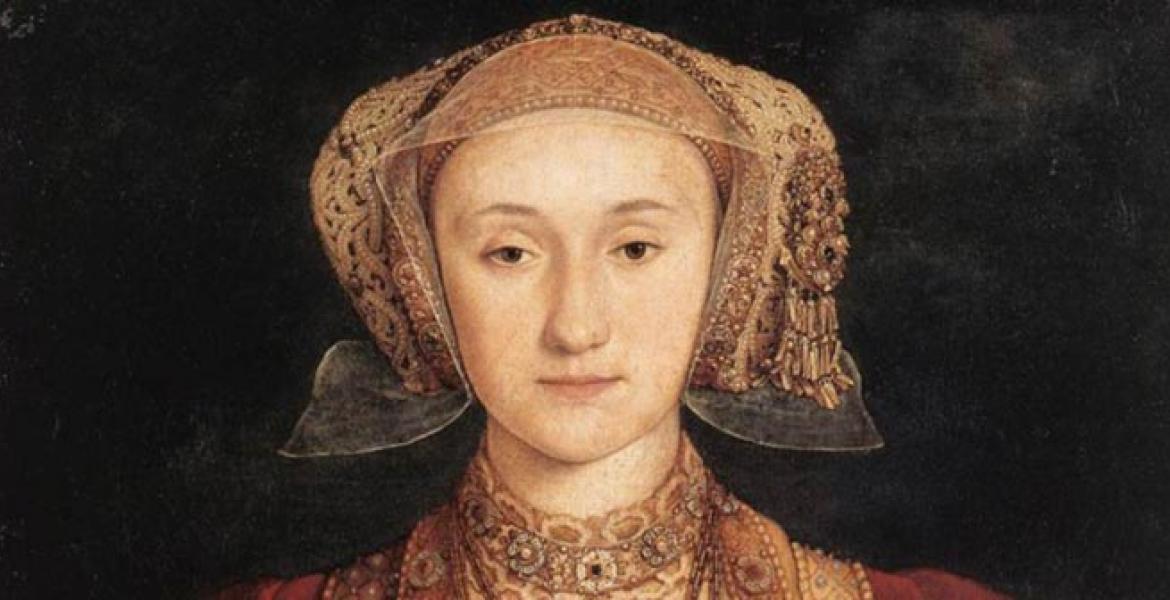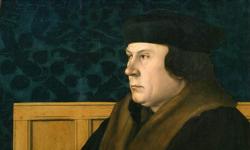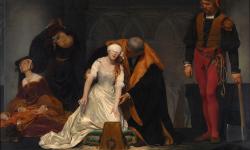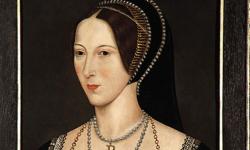Anne of Cleves: Stinky and Ugly?
Key facts about Anne of ClevesGerman: Kleve, is located along the Rhine river, near the Dutch border. German: Kleve, is located along the Rhine river, near the Dutch border.
- Anne of Cleves was Henry VIII's fourth wife
- He agreed to marry her based on a picture and the advice of Thomas Cromwell
- When he met her he found her to be stinky and unattractive
- Their marriage was annulledTo be declared invalid. To be declared invalid. in 1540
- She lived the rest of her life happily enough in England
People you need to know
- Anne of Cleves - the German fourth wife of Henry VIII
- Thomas Cromwell - chief minister to Henry VIII after the fall of Thomas Wolsey. Find out more about him here.
- Henry VIII - Tudor king of England between 1509 and 1547.
- Hans Holbein the Younger - German painter known as one of the best portrait artists of the 16th century.
- Kathryn Howard - the young fifth wife of Henry VIII.
- Jane Seymour - Henry VIII's third and favourite wife, who died shortly after giving birth to his only living male heir.
Following the death of his favourite wife Jane Seymour, and under the advice of Thomas Cromwell, Henry VIII set about finding a new and desirable bride. To this end one of the most famous artists of his time, Hans Holbein, was sent to the Duke of Cleves to paint the Duke’s sisters. Aware of the importance of a potential match (and guided by Cromwell, who wanted to push the ReformistSupporting the European Reformation of religion, where Protestants split from Catholic beliefs and practices, or supporting reform in a more general way. Supporting the European Reformation of religion, where Protestants split from Catholic beliefs and practices, or supporting reform in a more general way. cause forward) Holbein was, to say the least, somewhat flattering in his portrayal of the sisters. Henry was immediately swayed by the portrait of Anne, and agreed to marry her.
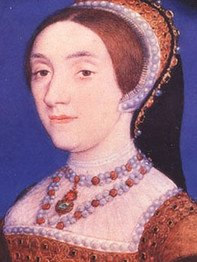
It was only when Henry met Anne, just a few days before the marriage, that he discovered she was not as pretty as promised. He was repulsed by her, saying she had terrible body odour and saggy breasts, and referred to her as the ‘ FlandersThe modern area of northern Belgium and historically a territory in the Low Countries. The modern area of northern Belgium and historically a territory in the Low CountriesA region in western Europe which includes Belgium and the Netherlands.. Mare’. Her lack of beauty was contrasted with that of another woman who had already caught his eye, and whom he would eventually marry (and execute): Kathryn Howard.
Nor was Anne socially attractive or interesting: brought up in LutheranA follower of the Protestant beliefs of Martin Luther. A follower of the ProtestantSomeone following the western non-Catholic Christian belief systems inspired by the Protestant Reformation. beliefs of Martin Luther. Cleves, she was unsuited to life at the English court, having none of the graces – such as an appreciation of music and literature – expected of a Queen.
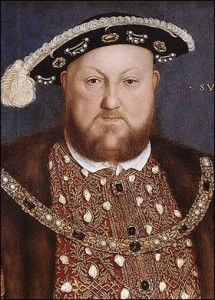
However, other sources suggest that our opinion of her as a boring, stinky frump may not be too well deserved. She was described by the French ambassador as tall and slim and ‘of middling beauty’. Although lacking social skills, she was considered ‘a ladie of right commendable regards, courteous, gentle, a good housekeeper and verie bountifull to hir seruants’. It is possible – or even probable – that her ‘faults’ were exaggerated by the whimsicalGiven to sudden and unaccountable changes of mood or behaviour, or given to whimsy and fanciful notions. Given to sudden and unaccountable changes of mood or behaviour, or given to whimsy and fanciful notions. King, who was already lusting after another. Philippa Gregory has suggested that the problem didn't lie with Anne at all, but rather with Henry, who then blamed his own problems on his new wife. As she says, 'There was indeed a fat stinking unsexy person in the Cleves/Henry VIII bed; but it was not the 24-year-old woman who knew that her future depended on pleasing her 49-year-old husband'. Philippa Gregory, The Women of the Cousins' War (London: Simon and Schuster, 2011) He had another reason for losing interest in Anne: the political union between Cleves and England was soon looking less appealing as the Duke became embroiled in disagreements with the Holy Roman EmpireA complex of territories in central Europe, covering at various times modern-day Germany Switzerland, Austria, the Low Countries, and parts of northern Italy and the Czech Republic. It developed during the Early Middle Ages and existed through the Early Modern period. A complex of territories in central Europe, covering at various times modern-day Germany Switzerland, Austria, the Low Countries, and parts of northern Italy and the Czech Republic. It developed during the Early Middle Ages and existed through the Early Modern period. , and Henry had no intention of being dragged into a foreign war.
Philippa Gregory, The Women of the Cousins' War (London: Simon and Schuster, 2011) He had another reason for losing interest in Anne: the political union between Cleves and England was soon looking less appealing as the Duke became embroiled in disagreements with the Holy Roman EmpireA complex of territories in central Europe, covering at various times modern-day Germany Switzerland, Austria, the Low Countries, and parts of northern Italy and the Czech Republic. It developed during the Early Middle Ages and existed through the Early Modern period. A complex of territories in central Europe, covering at various times modern-day Germany Switzerland, Austria, the Low Countries, and parts of northern Italy and the Czech Republic. It developed during the Early Middle Ages and existed through the Early Modern period. , and Henry had no intention of being dragged into a foreign war.

Thus, on 9 July 1540, just six months into the marriage, Henry had it annulled on the grounds that it had not been consummated. The disastrous marriage gave Cromwell’s opponents the opportunity they need to move against Cromwell, and Henry, humiliated and angry, had him executed for heresyA belief or opinion that goes against the official Church doctrine. A belief or opinion that goes against the official Church doctrineThe set of beliefs upheld by a religion or political party.. and treason on 28 July 1540 (the same day as his marriage to Kathryn Howard). Anne, very wisely, accepted the annulment. She received the honorary title of the ‘King’s Beloved Sister’ and given land in England, including Hever Castle which had formerly been the home of Anne Boleyn. As a member of the King’s family, she and Henry became friends and he declared that she would be given precedence over all women in the kingdom, except his wife and daughters. She was often at court and, following the death of Henry and Edward VI, she was involved in Mary’s coronationThe ceremony of crowning a king or queen (and their consort). The ceremony of crowning a king or queen (and their consort). . However, in 1554 she fell out of royal favour when she was (unfairly) linked to the Wyatt RebellionAn English uprising in 1554, caused by concern over Mary I's marriage to the future Philip II of Spain. An English uprising in 1554, caused by concern over Mary I's marriage to the future Philip II of Spain. , which expressed concern over Mary’s marriage to Philip II of Spain. She was retired to the country, where she died in 1557.
Things to think about
- How much was Cromwell to blame for the unsuccessful marriage between Anne of Cleves and Henry VIII?
- Was Anne of Cleves really that unattractive?
- Was it Henry VIII, rather than Anne of Cleves, who was responsible for the failure of the marriage?
- Was Anne better off as the 'King's Beloved Sister' than she would have been as his wife?
Things to do
- Hever Castle in Kent belonged to the Boleyn family until it was given to Anne of Cleves. You can find out more information about Hever Castle and buy tickets here.
- Another house associated with Anne of Cleves, and given to her in the divorce settlement, is what is now known as Anne of Cleves House in Lewes. You can find information about visiting here.
Further reading
It can be difficult to find many (decent) books on Anne of Cleves. Elizabeth Norton, while perhaps expressing some controversial ideas, has published a well-liked book, Anne of Cleves: Henry VIII's Discarded Bride. Retha Warnicke's The Marrying of Anne of Cleves: Royal Protocol in Early Modern England is a different approach to the marriage, and looks broadly at the customs and practices surrounding the it, while challenging many long-held notions about the relationship between Anne of Cleves and Henry VIII.
- Log in to post comments


